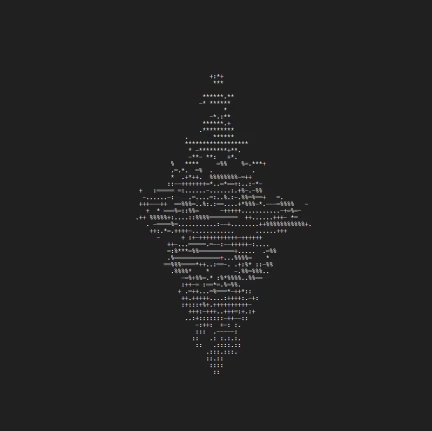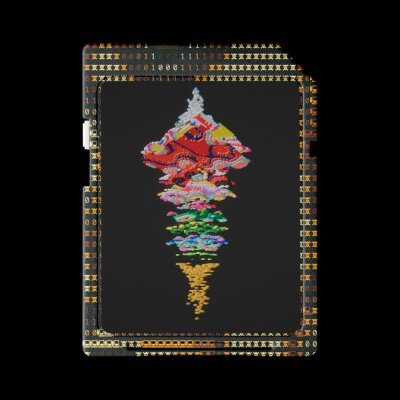Terraforms Are Trending, Here’s Why You Should Be Paying Attention
Every once in a while, an NFT advent arrives that shakes the foundations of Web3. At first, the sole innovator of the metaverse seemed to be PFPs. Then came text-based NFTs, open editions, minigames, and so on — expanding outward to more conceptual advents like Soulbound Tokens and phygital goods.
Anecdotally, it’s been anyone’s guess as to what might set off a new trend and bring both interest and copycats to a budding sector of the NFT market. Yet, after many hype cycles have come and gone and with no clear breadwinner currently in sight, an unlikely suspect has reemerged from the annals of NFT history to recapture the imagination of the metaverse.
Rather than a “hot new thing” taking the spotlight, a project called Terraforms, born in the initial NFT boom of 2021, has taken center stage. But why has this unique, large-scale project become the talk of the blockchain once again?
What are Terraforms?
Terraforms is a collection of “on-chain land art from a dynamically generated on-chain 3D world,” consisting of 9,910 animated, text-based NFTs.
Launched on December 17, 2021, by product studio Mathcastles — which consists of anonymous developers 0x113d and xaltgeist — each NFT within the Terraforms collections exists as a piece of animated art rendered on a 32×32 grid. These tokens are meant to represent a parcel of land, and each parcel embodies a range of different attributes.
Similar to the many other land-based NFT endeavors out there (Otherside, World Webb Land, etc.), there are various properties that can be exhibited within any individual Terraform.
These properties include 75 different “Zones,” which correspond to color palettes; 92 “Biomes,” which refer to the type of text characters and shapes that make up the grid and animation; and four different options of “Chroma,” which govern the speed of the cycling of the animation.
But the complexities don’t stop there. While each Terraform exists on its own as a generative NFT, altogether, they make up a complex, 20-level fictional structure known as a “Hypercastle,” as explained in the above video by generative artist and Hypercastle Explorers project founder mmmatto (real name Matt Shadetek).
What are Hypercastles?
While, in the past, the PFP market has been characterized by generative avatars comprised of random assortments of traits, each with varying rarities, Terraforms offers a unique take on this rarity and trait system. That’s because, in addition to each Terraform living as a unique and individual piece of generative art, they also exist as a piece of a broader ecosystem: a Hypercastle.
Along with its internal characteristics, every Terraform token is also assigned structural metadata, which is commonly denoted in a single NFT’s name, i.e., Level 14 at {41, 22}. This data essentially explains the location of each 2D Terraform within a larger 3D structure called a Hypercastle.


As explained by Shadetek in his video, “A Hypercastle has 20 vertical levels and narrows to a point at the top and bottom, with the widest points at levels 13 and 14.” He also notes that, in addition to its structural metadata, each Terraform token also contains information about its internal elevation, “in which the visible shapes in the 2D artwork correspond to elevations in a three-dimensional map.”
The structural information that dictates the size, shape, and position of each NFT is encoded within the smart contract of each Terraform token. This means that each Terraform is fully on-chain, and its attributes can be referenced and reproduced by calling the tokens functions on-chain.
The unique Hypercastle element of the Terraforms project has led to a community being formed around the Mathcastles ecosystem, with a variety of developers utilizing the project’s on-chain data to reinterpret the original concept of both Terraforms and Hypercastles.
Most notably, Shadetek’s Hypercastle Explorers has become a popular facet of the Mathcastles ecosystem, as it renders a virtual environment of a Hypercastle using the Unity game engine. Additionally, the community that has formed around the project has created an unofficial FAQ for those looking to learn more about the complex and growing ecosystem.
Terrain, Daydream, Terraform
In addition to existing as both a collection of 2D and 3D artwork and as building blocks for Hypercastles, Terraforms have a few additional functionalities. These functionalities, or modes, come in three unique types and are potentially the most interesting facets of the project.
The first is “Terrain.” In terrain mode, users can simply view a Terraform’s land art animation. This is the original state of a Terraform and features a pulsing ASCII artwork. The next is “Daydream.” This mode can be accessed by inputting a command directly into the contract on Etherscan and essentially transforms a Terraform into a sort of drawing program. Finally, “Terraform” mode commits whatever drawing a user may create back to the blockchain for others to view.
The latter two modes come with a unique caveat, though, as by drawing within a Terraform, users overwrite the existing terrain artwork. While any Terraform parcel can switch between daydream and terraform indefinitely, the initial change from terrain to daydream can only happen once and is irreversible. Once you initiate daydream mode, you can never go back to your Terraform’s original state.
This is where the real rarity methodology of the Terraform ecosystem comes into play. Because with every change made to a Terraform, the overall Hypercastle changes as well. And as the original state of the Hypercastle changes and degrades, so too does the original project released by Matchacastles, forever.
Because of this, many collectors have locked their Terraforms away. Perhaps in an effort to preserve the originality of their Terraform NFTs and the Hypercastle, they have opted to hold onto them as a grail, never to change or be sold. But others still have embraced the collaborative aspect of the project, wiping their NFT clean in order to make a new creation.
The current Terraforms hype
In 2023, Terraforms are making a palpable comeback. But why? Of course, aside from secondary collection hype, the excitement about the project undoubtedly underlines the sheer scope of the Terraforms vision. That is, the project was created to be a long play and to be built on top of rather than something that would need upkeep and repromotion in perpetuity — a cycle that some collections have fallen into.
Whether or not there is something more on the horizon, though, this latest round of attention is already being warmly welcomed by both fans and collectors of Mathcastles. Surely, as more enthusiasts uncover the complex ecosystem that has formed around Terraforms, they will find that there is more than enough to learn about the genesis collection to keep them busy.
Editor’s note: This article has been updated. An earlier version of this article contained inaccuracies about the project.
The post Terraforms Are Trending, Here’s Why You Should Be Paying Attention appeared first on nft now.

